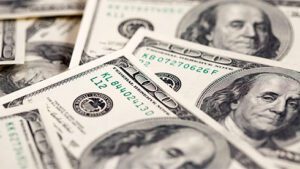
The U.S. dollar rose moderately against the euro and pound sterling Wednesday morning as traders assessed U.S. inflation data for January.
The ICE-calculated index, which shows how the U.S. dollar is performing against six currencies (euro, Swiss franc, yen, Canadian dollar, pound sterling and Swedish krona), is up 0.2% in morning trading.
The euro/dollar pair is trading at $1.0716 at 7:43 a.m. versus $1.0737 at the close of Tuesday’s session, the euro is losing about 0.2%.
As it became known the day before, consumer prices (CPI) in the U.S. rose by 6.4% in January compared to the same month last year. Thus, inflation slowed down from 6.5% in December.
However, analysts had expected a much more significant weakening in the pace of price growth, to an average of 6.2%, according to Trading Economics. The slower-than-expected slowdown in inflation raises the possibility that the Fed will continue to stay tight on monetary policy.
Now the market is waiting for U.S. retail sales data for January, which will be released at 4:30 p.m. Moscow time on Wednesday to better gauge the health of the U.S. economy. According to the consensus forecast, sales jumped 1.8% year-over-year last month after falling 1.1% in December.
The pound is 0.2 percent cheaper, trading at $1.2152 versus $1.2174 at the close of last session.
The dollar/yen exchange rate is at 133.05 yen compared to 133.12 yen the day before.
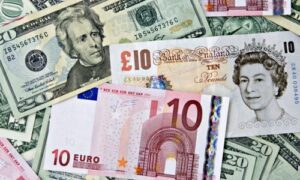
The US dollar is getting weaker against the euro and the pound sterling in trading on Monday.
This week traders’ attention is focused on January data on consumer price dynamics in the states. Experts fear that the report of the U.S. Labor Department to be published on Tuesday will confirm that the fight against inflation is far from over, thus dispelling hopes that the cycle of monetary tightening by the Federal Reserve System (FRS) will soon be over.
According to an expert consensus forecast cited by Trading Economics, U.S. consumer prices rose 6.2% year-over-year in January, up from 6.5% in December.
“Depending on what the inflation data are, we could see either markets breathe a sigh of relief or risk aversion accelerate,” said Standard Chartered Plc analyst Eric Robertsen.
“The more the Fed extends the cycle of rate hikes and delays the transition to rate cuts, the more likely it is that the U.S. economy will “hard land” and that the U.S. central bank will have to lower the rate more aggressively in the future,” Robertsen was quoted as saying by Bloomberg.
University of Michigan data released Friday showed that Americans’ inflation expectations for the medium term (next year) rose to 4.2% in February from 3.9% in January.
The ICE-calculated index showing the dollar’s performance against six currencies (euro, Swiss franc, yen, Canadian dollar, pound sterling and Swedish krona) added 0.11% on Monday, while the broader WSJ Dollar Index gained 0.22%.
The euro/dollar pair is trading at $1.0669 as of 8:10 a.m., up from $1.0679 at the close of the previous session.
The pound is at $1.2047, up from $1.2060 on Friday.
The dollar’s value against the yen rose to 132.17 yen from 131.4 yen in previous trading.
On Tuesday the Japanese government will submit a candidate for the post of the Central Bank head to the parliament. On Friday the Japanese mass media informed that Prime-Minister Fumio Kishida chose Kazuo Ueda, 71-year-old, from the list of candidates for the post. The current head of the Bank of Japan, Haruhiko Kuroda, will step down in early April.
Initially, investors interpreted the decision to choose Ueda as a potential “hawkish” signal, said Bloomberg. That opinion, however, changed after his speech to reporters, during which he said he believes the Bank of Japan’s current ultra-soft policy should remain unchanged.
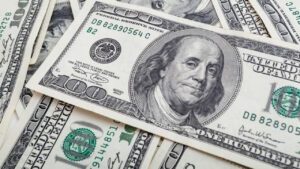
The U.S. dollar is strengthening against the euro, the yen and the pound sterling in trading on Friday.
The ICE-calculated index showing the dollar’s dynamics against six currencies (euro, Swiss franc, yen, Canadian dollar, pound sterling and Swedish krona) is adding 0.16%, while the broader WSJ Dollar Index is up 0.18%.
The euro/dollar pair is trading at $1.0722 as of 7:50 a.m., up from $1.0743 at the close of the previous session.
The pound is at $1.2097, compared to $1.2121 the day before.
The dollar went up to 131.74 yen against 131.54 yen at the close of trading on Thursday.
Signals that the Federal Reserve (Fed) may raise the benchmark interest rate higher than the market expects provided support for the American currency. Several Fed policymakers this week signaled they believe a further rate hike is necessary because the fight against high inflation has not yet been won and there is no significant slowdown in economic growth.
Next week, the January U.S. inflation data will be released. The consensus forecast from experts cited by Trading Economics suggests consumer prices are up 0.5% from December, when they fell 0.1%.
The Australian dollar fell in trading Friday to $0.6924 from $0.6937.
The Reserve Bank of Australia (RBA) raised its forecast for core inflation, which excludes food and energy costs, for the current fiscal year ending in June to 6.25% from 5.5%.
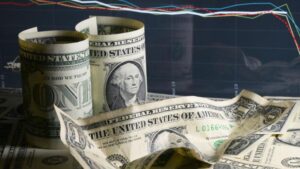
The U.S. dollar is getting cheaper against the euro, the yen and the pound sterling in trading on Tuesday after a strong strengthening following the previous session.
The ICE index showing the dollar’s movement against six currencies (euro, Swiss franc, yen, Canadian dollar, pound and Swedish krone) was losing 0.14% while the broader WSJ Dollar Index lost 0.27%.
The euro/dollar pair is trading at $1.0744 as of 8:20 a.m., up from $1.0726 at the close of the previous session.
The pound is at $1.2054, up from $1.2018 the day before.
On Monday the euro fell by 0.7% against the dollar, while the pound gained 0.3%. The U.S. currency was bolstered by strong U.S. labor market statistics for January, which showed that the Federal Reserve (Fed) still has enough room to maneuver in terms of further tightening monetary policy.
Rafael Bostic, president of the Federal Reserve Bank (Fed) of Atlanta, told Bloomberg on Monday that the Fed may have to raise rates higher than previously expected because economic activity in the U.S. is slowing weakly. “It’s going to mean we’re going to have to do a little bit more work,” Bostick said. – And I believe the Fed will have to raise the rate higher than I’m currently forecasting.”
Traders are waiting for more signals from Federal Reserve (Fed) Chairman Jerome Powell, who will speak at the Economic Club in Washington on Tuesday.
The dollar fell to 132.12 yen against 132.65 yen at the close of previous trading.
The yen weakened more than 1% against the dollar on Monday after the Nikkei newspaper reported that the Japanese government is offering the post of the central bank head to the current deputy Haruhiko Kuroda, who is retiring in April.
Masayoshi Amamie has been Kuroda’s deputy since 2018 and is considered one of the authors of the Bank of Japan’s ultra-soft policy. Experts believe that his appointment as head of the Central Bank increases the chances of preserving the current approach of the Japanese regulator to monetary policy, notes Bloomberg.
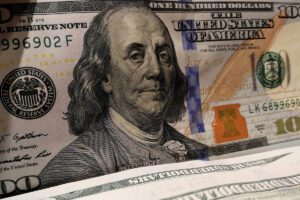
The ICE computed index showing the dollar’s trend against six currencies (euro, Swiss franc, yen, Canadian dollar, pound and Swedish krona) gained 0.15%, while the broader WSJ Dollar Index gained 0.09%.
The ICE dollar index jumped more than 1 percent Friday following the release of U.S. economic data showing that the U.S. labor market remains strong, leaving ample room for the Federal Reserve (Fed) to maneuver further tightening monetary policy.
According to the U.S. Labor Department, the number of jobs in the U.S. economy increased by 517,000 in January and unemployment fell to its lowest level since 1969, 3.4%.
This week, traders will be waiting for more signals from Federal Reserve (Fed) Chairman Jerome Powell, who will speak at the Economic Club in Washington on Tuesday.
During a press conference on the results of the January 31-February 1 meeting of the U.S. Central Bank, Powell acknowledged for the first time that “the disinflationary process has begun. He also suggested that the Fed rate, which was raised to 4.5-4.75% at the end of the meeting, would not exceed 5%, and reiterated that the Fed could achieve slowdown in inflation without causing significant harm to the economy.
The euro/dollar pair is trading at $1.0797 as of 7:55 a.m., up from $1.0799 at the close of the previous session.
The pound is at $1.2062, compared to $1.2056 at the close of the previous session.
The dollar rose to 131.71 yen against 131.18 yen the day before.
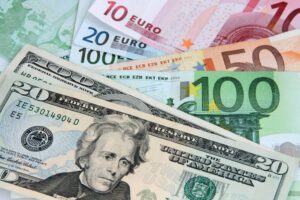
The U.S. dollar is getting stronger against the euro and the pound sterling in trading on Friday, getting cheaper against the yen.
The ICE-calculated index showing the dollar’s performance against six currencies (euro, Swiss franc, yen, Canadian dollar, pound sterling and Swedish krona) is gaining 0.07%, while the broader WSJ Dollar Index is up 0.08%.
The euro/dollar pair is trading at $1.0894 as of 8:00 a.m., up from $1.0911 at the close of the previous session.
The pound was down to $1.2212 from $1.2224 at the close of the previous session.
Both the European Central Bank (ECB) and the Bank of England raised key interest rates by 50 basis points (bps) on Thursday, with the European regulator saying it intends to raise them by the same amount at its next meeting in March.
Britain’s central bank lowered its inflation forecasts for 2023-2025, while ECB President Christine Lagarde said risks to both economic growth and inflation in the euro zone have become more balanced.
The day before the Federal Reserve raised its prime rate by 25 basis points. The rate had been raised 50 bps at the previous meeting and had been raised four times before by 75 bps.
The head of the US Central Bank Jerome Powell acknowledged at a press conference following the meeting for the first time that the “disinflationary process has begun”. He also said that the rate will not exceed 5% and reiterated that the Fed can achieve slowdown in inflation without causing significant harm to the economy.
The value of the dollar paired with the yen fell to 128.3 yen in trading on Friday, compared with 128.72 yen the day before.